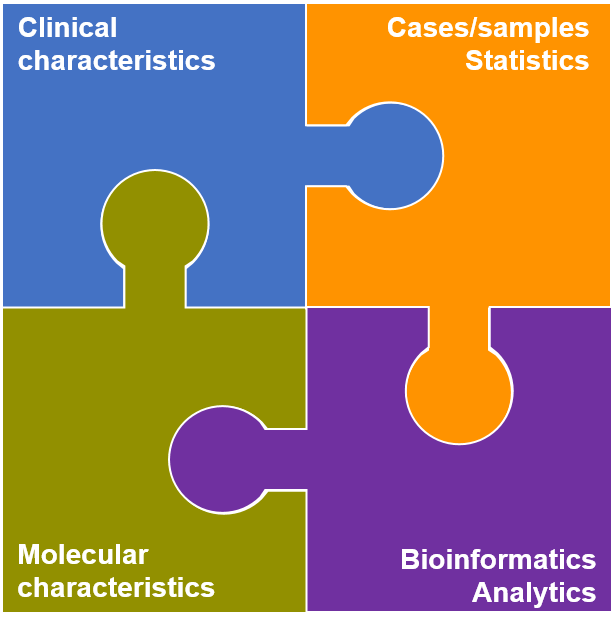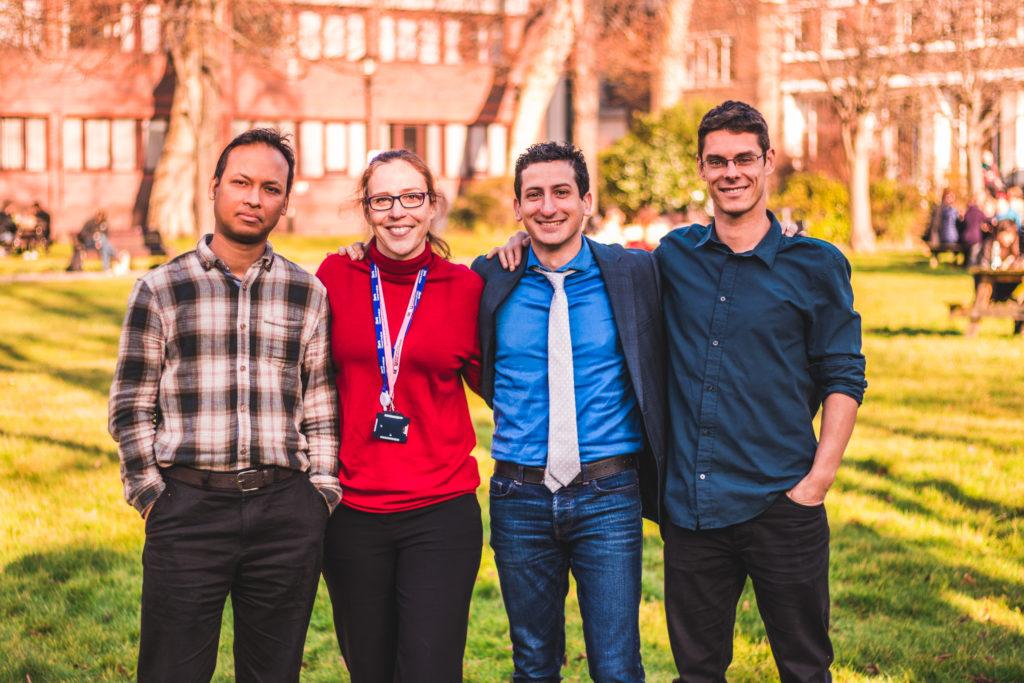Staying connected: New developments for tissue banking bioinformatics
A team of researchers at the Barts Cancer Institute (BCI) of Queen Mary University of London have developed new analytical tools to aid in the analysis of tissue bank (TB) samples, which are an extremely valuable resource for scientists.
The Breast Cancer Now TB (BCNTB) is formed from a confederacy of five leading institutions across the UK that excel in breast cancer research; including the BCI where the BCNTB group is led by Prof Louise Jones. Unveiled to researchers in the UK and Ireland in 2012, it provides access to over 48,000 samples from breast tissue, blood/blood derivatives, and a bespoke cell line service.
The Pancreatic Cancer Research Fund TB (PCRFTB), led by Prof Hemant Kocher at BCI, was established in 2016 and brings together six NHS centres renowned for their expertise in treating pancreatic diseases.
Dealing with 'big data'
 Experiments conducted on tissue samples from TBs generate a vast amount of data. Bioinformatics - a field that utilises computational tools to unravel the intermingled strands of ‘big data’- provides researchers with the means to maximise the potential of research findings. The BCNTB bioinformatics and the Pancreatic Expression Database (PED) are computational platforms that allow researchers to explore, investigate and interpret a variety of data generated using breast- and pancreatic-related samples. These platforms are being developed to connect researchers from different disciplines to accelerate research across the international community and propel cancer research to new heights.
Experiments conducted on tissue samples from TBs generate a vast amount of data. Bioinformatics - a field that utilises computational tools to unravel the intermingled strands of ‘big data’- provides researchers with the means to maximise the potential of research findings. The BCNTB bioinformatics and the Pancreatic Expression Database (PED) are computational platforms that allow researchers to explore, investigate and interpret a variety of data generated using breast- and pancreatic-related samples. These platforms are being developed to connect researchers from different disciplines to accelerate research across the international community and propel cancer research to new heights.
BCNTB bioinformatics was purpose-built for the BCNTB and has recently evolved from a stand-alone platform to an integrated research resource. It has been adapted to accommodate the growing amount of data generated from samples in the Bank. The new developments to the platform, published in Nucleic Acids Research Database Issue 2018, will help to ensure that breast cancer data are utilised to their maximal potential.
Recent developments to the PED, also published in Nucleic Acids Research Database Issue 2018, involve the incorporation of new analytical tools that can analyse and integrate data generated from a range of research areas, including experiments using tissues and body fluids from healthy individuals or patients, cancer cell lines and animal models. These updates will facilitate the integration of the PED into the PCRFTB.
Dr Jacek Marzec said:
I'm proud that I had the opportunity to work on PED and that I could help to expand its functionality. I believe that this state-of-the-art resource will help the pancreatic research community to maximise the potential of huge volumes of available data and that the ongoing integration with the PCRF tissue bank will support cutting-edge translational research for the benefit of patients.
Looking to the future

The full potential of the relationship between each TB and its corresponding research portal will become reality as experimental data generated by studies using these samples is returned and stored alongside its corresponding clinical information. Researchers will be able to explore specimens and clinical characteristics; analyse and integrate data from samples thereby creating a tissue banking ecosystem with patient benefit at its core.
Dr Emanuela Gadaleta said:
The strength of the Banks is that they have united people from multiple disciplines and used their expertise to build a biobanking ecosystem. We have researchers, clinicians, pathologists, computer scientists, bioinformaticians and, at the heart of it all, we have the patients, whose unique insights are an invaluable resource to all biobanks. I am grateful to be a part of this.
The TB bioinformatics team at the BCI, led by Prof Claude Chelala, includes Dr Emanuela Gadaleta, Dr Stefano Pirrò, Dr Dayem Ullah and Dr Jacek Marzec.
Prof. Claude Chelala added:
Our goal is to develop bioinformatics infrastructures to be used as a template for future TBs and link clinical, molecular and sample data to maximise research output. I would like to thank Breast Cancer Now and the Pancreatic Cancer Research Fund, and all the members of their teams across the UK. I would also like to thank patient advocates and the patients that have donated tissue, without whom work like this would not be possible.
Category: General News

No comments yet